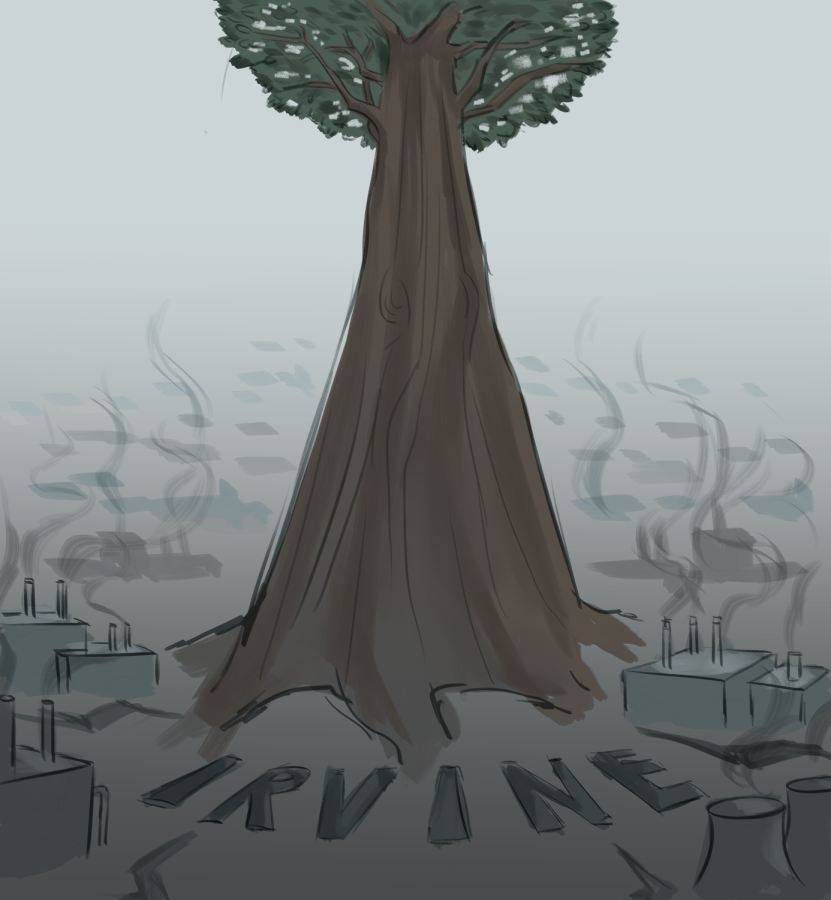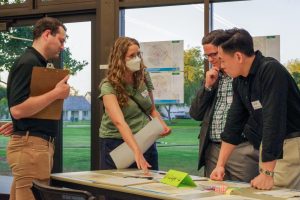Irvine’s lead in calling for carbon neutrality
September 29, 2021
6 years, 117 days, 17 hours and 23 minutes, the giant digital clock in New York City reads. As the clock counts down to doomsday, the world is idly watching. Watching the time we have left in staying within the Paris Agreement’s pledge of keeping global warming under 1.5 degrees Celsius. On the other side of the country, the Irvine City Council officially pledged carbon neutrality through the Irvine Achieves Resolution on Aug. 10. As the first in Orange County and only the third in California to do so, Irvine’s swift and clear-cut climate action addresses specific environmental issues and paves the way for other Orange County cities to do the same.
With California Gov. Gavin Newsom proposing a new goal of carbon neutrality by 2035, local governments face the challenge of designing their own climate action. Irvine’s prompt resolution comes with a number of reforms. New electric vehicle charging networks, zero-carbon standards for new infrastructure and alliances with local businesses in achieving more sustainable production are all among the mix.
Most notably, Irvine’s initiative coincides with the California Energy Commission’s recent update on statewide building codes that encourages electric water-heating technology and expands rooftop solar requirements to non-residential buildings.
By planning according to state goals and laws already in place, Irvine is setting a great example in playing its part in a team effort against carbon emissions. These energy reforms are also not to be underestimated as Irvine’s population is expected to grow by over 50,000 people in the next 30 years.
Although Irvine’s goal to become carbon neutral by 2030 is a stretch, community members already have opportunities to get involved. 200 Irvine volunteers are needed to participate in California’s “Cool City Challenge” to serve as “Cool Block” leaders.
Cool Block leaders will lead sustainability efforts, recruiting other members to participate through initiatives that require “work with a team to host sustainability workshops in 2022.” Citizens can often feel powerless when it comes to climate action, but in this case, the people of Irvine can directly help the city secure $1 million in funding to help implement planned climate reforms. Students should take this opportunity to create a club at their school, emphasizing a crucial public and civic partnership.
However, in order to take this a step further, the City of Irvine should look to expand its already existing programs like the Youth Advisory Council. It would be in the City of Irvine’s best interest to form a subsection that provides youth a platform to target environmental issues specific to Irvine and its schools.
Take Los Angeles County Mayor Eric Garcetti’s Youth Council for Climate Action for example, where the mission statement mentions goals to “fight environmental inequality; make structural change in our City; appeal to people in positions of authority; and gather tools to take back to our communities so we can mobilize and organize our peers.”
South Pasadena has also seen success in significantly publicizing the highs of climate reform by holding annual Clean Air Car Shows and Green Living Expos. These events are planned by youth commissioners who develop educational programs and plan hands-on activities. Attracting over 5,000 attendees annually, attendees of all ages can participate in valuable conversation on applying climate action to city infrastructure while also having fun.
With most setting 2050 as a breaking point in climate change, Irvine’s adaptation of a climate moonshot strategy of looking ahead of time is already an important step in the right direction, given the difficulties that come with passing climate reform.
“To adopt and implement the policies, it seems like we should have started five or 10 years ago,” Irvine councilmember Larry Agran said in a statement to the Los Angeles Times. “Unless we get super serious and super aggressive about solarization and electrification, the 2030 carbon neutrality aspirational date will appear to be a cruel joke.”
Carbon emissions are on the rise and are ultimately a problem that will only be solved through seeing others act on it. Although clear-cut action is important, citizen and civic alliances are equally as crucial in combating environmental crises, and what we consider to be sufficient to fight climate change will be up to the Irvine City Council to address.


























































